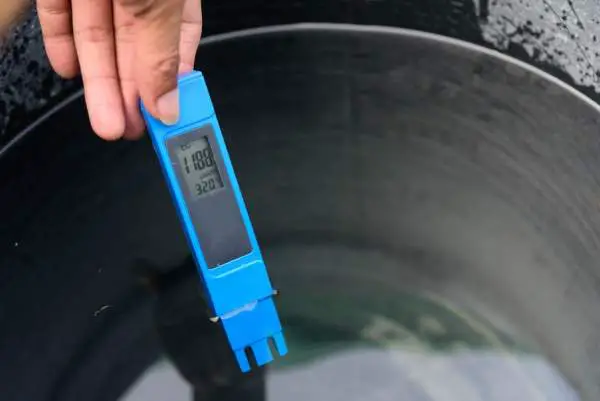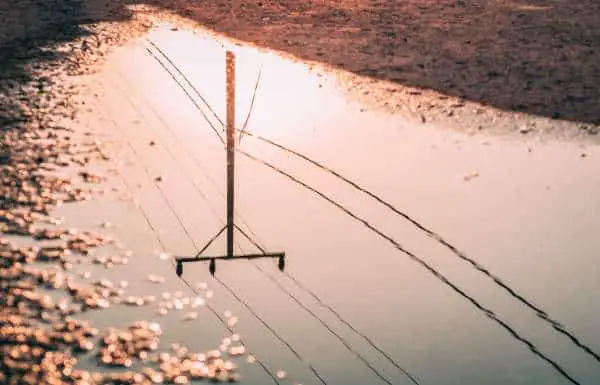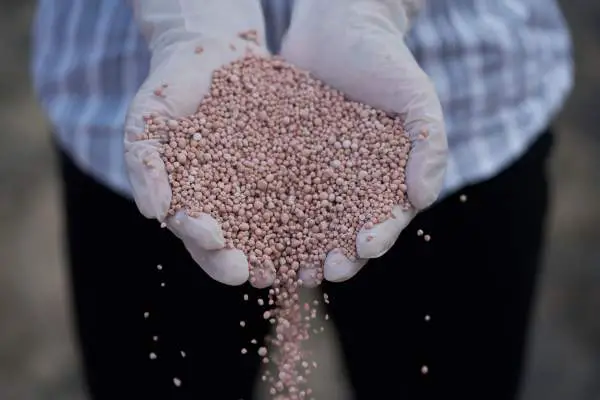Many new hydroponic gardeners get confused with all the readings they need to take. With EC, pH, and TDS, it can be boggling. To make it worse, there is another reading growers should be aware of.
CF and how to control it is can be daunting, luckily though, these readings are not so hard to fully understand.
Here, we will explain what CF is and how it can affect your garden. We will also see how it relates to other readings you need to take from your solutions
What is CF?
CF stands for conductivity factor, and like the EC of your nutrient mix, it is a way of telling you how weak or strong your formulation is.
If it is too strong, you can quickly overfeed your crops, and if it is, too weak and you can find your plants are suffering nutrient deficiencies.
To make things even simpler for new growers, the CF (Conductivity Factor) and the EC (Electrical Conductivity) are basically the same things.
There is one slight difference, and that is CF is a 10 x multiple of an EC reading. You may wonder why there is a need for another reading, which is the same as another albeit in a different format.
It is true; a CF reading is just your EC reading and multiplied by 10. It can be used because it eliminates any requirement for a decimal point.
To simplify this, you can use the following:
- 1 EC equals 10 CF
- EC multiplied by 10 equals your CF
- CF divided by 10 equals your EC
Understanding Your Target CF
When you purchase any hydroponic nutrients, you will find that the majority of suppliers give a target EC or CF. this will of course though assume that you are setting out with an EC/ CF of zero.
About your water, this can only come from pure water, which has a CF/ EC of zero. Water from the faucet contains minerals and will vary depending on if it is soft water, or it is hard water as you can see here.
Soft Water – is generally CF 2 (or EC of 0.2)
Hard Water – is generally CF 8 (or EC 0.8)
There are two steps to find out your actual target CF.
- Take a reading of your base water to find the CF
- Add this reading to your manufacturers target CF
As an example, if you have water from your faucet, and it is soft water. You will have a CF of 2. If your nutrient manufacturer’s target CF is 16, you will have an actual target CF of 18.
When manufacturers offer these target CF’s, they will do so for plants that are at various stages of growth.
- Young plants – CF of between 4 to 10
- Established plants – CF of between 10 to 18
Just like EC readings, an ideal CF will vary. The CF can be seen as your nutrient to water ratio. This means if plants are hungry, they will require more nutrients, and likewise, if they are thirsty, they will take up more water.
Just like other readings in hydroponics, there can be many factors, which affect things. With this, there are many things that can make crops and plants thirstier or hungrier throughout their life.
- Types and size of crops and plants
- Season and temperature of grow room
- Water hardness used
- Method of growing
Taking a reading may not deliver the chance to find an exact CF. It is for a reason that you will need to take readings at regular intervals.
Just like your pH levels, you will find your CF levels go up or down, and you will need to respond to bring these back in line.
Checking Your CF
To test your CF in your solution can be much the same as taking any other reading. There are various meters, which can take readings of CF along with EC, pH, and others. Most of these require manual calibration in comparison to one device called the Truncheon by Bluelab.
These are factory-calibrated, but they do come with a higher price tag than the other digital meters.
- Leave a pale/ bucket of water from the faucet outside to dechlorinate for at least 24-hours.
- Use your CF meter to take a background reading
- Add your nutrients at the manufacturers recommended doses
- Once they have dissolved and settled, take another reading
- If it is too high, add water to lower the CF level
One thing that is worth remembering is that a one-degree rise in temperature can raise your CF reading by 2%. Because of this, you should aim to take your readings at the same time every day.
Also Read: How to Test the pH of Water?
Correcting CF Levels
Ideally, you will want your CF levels to remain the same as your plants feed. If this happens, it means you have your CF set correctly.
However, in the instances, it has gone up or down, the first thing not to do is panic; you can adjust this as required.
When CF levels rise, this means plants are taking up more water than you expected them to. This can happen when the environment is warmer, and plants become thirstier. This will leave the concentration of TDS increasing in strength.
To lower this, you should top off your tank with plain water only. This is the standard way of making sure your plants don’t suffer from nutrient burn.
If your CF levels drop, many growers will advise adding more nutrients to raise these levels. However, there are more growers who advise to never add nutrients at this stage. It is better to let plants have access to less than to begin overfeeding them.
If you want to be sure they get enough nutrients, the easiest way can be to flush your tank and add a new batch of nutrients with the correct CF.
Warning Signs Your CF Levels are Wrong
The signs that levels are not correct are very similar to EC levels that are out of balance.
If you are underfeeding, you may see
- Phosphorous: Stems and parts of large leaves begin to purple
- Nitrogen: Leaf tips yellow and begin moving toward the step of the plant
- Potassium: The yellowing moves from the tips toward the main leaf veins
If you find out you are overfeeding, you may spot the following signs
- Your plants leaves begin curling downward
- Leaves have stunted growth and are too small
- Leaves are dark and lack any vibrancy
Conclusion
There may be a good many growers who find out that CF isn’t used very often when taking readings of their solutions. It is however better to understand what it is, and how to calculate it if needed.
It is good to know that one CF is equivalent to around 65 PPM (Parts per million), and the EC with be around 650 PPM as an equivalent. Because there are lots of confusion with these figures, new growers follow the simplest of methods, which works for thousands of gardeners with hydroponic systems.
Keep things simple and run half-strength solutions in the vegetative stage of growth. Once your plants reach the fruiting and flowering phases, you can then deliver a full-strength set of nutrients when they can handle them.
Aside from this, flush your tank and replenish with new nutrients on a regular basis, and you will see great results.
Associated Questions
Why is a CF/ EC level important? While some growers don’t use these readings, knowing what they mean does allow you to understand more what happens in your system. Your CF and EC can stay the same, or go up and down. If plants are taking up water, then you should always see a CF that increases as nutrient concentrations increase.
What does PPM mean? Parts per Million means one part of your nutrients in one million parts of your solution.
Which is the best meter, an EC or TDS meter? Many new meters can read multiple things and will make the conversions for you. However, it does depend on your plant nutrient recommendations. If your scales are in EC/ CF then a meter that reads these is ideal, however, if you are using PPM, then a sodium chloride TDS meter will be easier to use.





